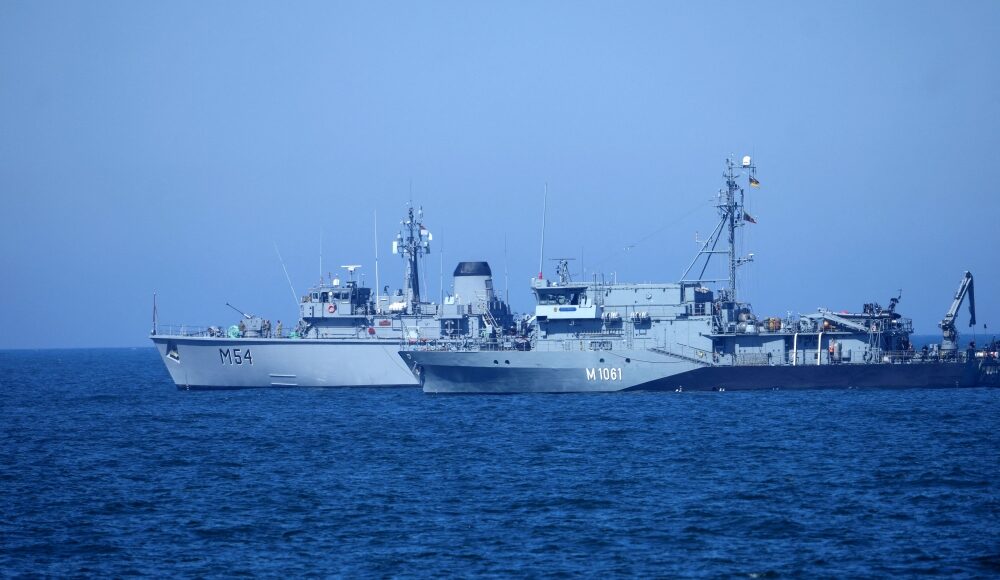MAY 25 — In an age of intensifying maritime rivalry and rising naval nationalism, few regions possess the geopolitical leverage, commercial reach, and diplomatic flexibility to shape a new maritime security architecture. But as the seas grow more contested, Asean, the Gulf Cooperation Council (GCC), and China are finding common cause — through trade, infrastructure, and now, maritime security.
One of the most underutilised platforms for this cooperation is the Combined Maritime Forces (CMF) — a 34-nation naval coalition headquartered in Bahrain.
With task forces operating across the Red Sea, Gulf of Aden, Arabian Gulf, and parts of the Indian Ocean, the CMF’s mission is deceptively simple: to guarantee the freedom of navigation and uphold maritime stability. But its real utility lies in its open-ended structure, which allows willing partners to plug in without ideological alignment.
While Asean as a bloc is not a formal member, countries like Malaysia, Singapore, and Thailand have contributed to CMF operations as observers or auxiliary support.
The GCC, meanwhile, anchors the CMF’s physical infrastructure, hosting forward-operating naval bases and control centres. China, though not a participant, runs parallel maritime missions — most notably in the Gulf of Aden — positioning it as a “functional converger,” if not a formal ally.
Beyond the horizon: From strategic chokepoints to shared stakes
The strategic logic is unassailable. With half of the world’s oil and gas passing through Gulf and Southeast Asian sea lanes, maritime cooperation is not a luxury — it’s a necessity. As piracy, trafficking, and grey-zone coercion persist, especially in the Straits of Hormuz, Bab el-Mandeb, and the South China Sea, the old binaries of U.S.-led versus China-led blocs no longer hold. What matters now is operational interoperability, timely information, and political will.
This is where the CMF and future maritime cooperation arrangements could evolve toward a C4ISR framework — the digital nervous system of modern naval operations.
Understanding C4ISR: The backbone of modern maritime strategy
C4ISR stands for Command, Control, Communications, Computers, Intelligence, Surveillance, and Reconnaissance. It integrates real-time data from satellites, drones, radar, and naval sensors to help commanders understand the battle space, respond swiftly, and coordinate effectively.
In essence, C4ISR:
- Enhances Maritime Domain Awareness (MDA), a critical need for Asean countries facing IUU fishing and territorial incursions.
- Enables joint operations without formal alliances, ideal for Asean and GCC states wary of entangling security commitments.
- Facilitates crisis coordination in grey zones and disaster-prone maritime corridors.
For instance, the Information Fusion Centre (IFC) in Singapore already acts as a hub for sharing maritime intelligence with partners including CMF members. Extending this to a Gulf-Asean-China maritime C4ISR bridge would dramatically boost collective security and build confidence in overlapping patrol zones.
China, for its part, has rapidly improved its C4ISR capabilities with BeiDou navigation systems, maritime drones, and AI-driven surveillance analytics. While the West views these with caution, Asean and GCC countries could benefit by standardising threat assessments, coordinating HADR (Humanitarian Assistance and Disaster Relief) missions, and jointly policing shared sea lanes — without provoking hegemonic anxieties.
German Navy M1061 Rottweil and Lithuanian Navy M54 Kursis minehunters attend international naval mine clearance operation “Open Spirit / EODEX 2025” at sea near Klaipeda, Lithuania May 20, 2025. — Reuters pic
From soft patrols to hard coordination
The possibilities for structured maritime cooperation are expanding:
Joint patrols under humanitarian or environmental mandates can avoid geopolitical entrapment while building trust.
Anti-piracy missions in the Gulf of Aden and Sulu-Celebes Seas could be coordinated through a modular Asean-GCC-CMF task force.
Maritime cyber defense — a rising concern with the advent of autonomous vessels and port digitalisation — could see trilateral cooperation in tracking maritime malware, rogue signals, and GPS spoofing.
In this, China’s technical prowess, the GCC’s strategic geography, and Asean’s diplomatic neutrality are complementary assets, not contradictions.
Challenges at sea, opportunities in strategy
Yet the path to convergence is not free of squalls. Asean remains divided on issues like the South China Sea; the GCC countries still face trust deficits with Western and Eastern powers alike; and China remains wary of joining any platform it does not lead. Moreover, legal ambiguities in UNCLOS, overlapping territorial claims, and the lack of interoperability in naval platforms all hinder more robust integration.
Nonetheless, the stakes demand vision. As the Red Sea chokepoint becomes increasingly unstable, and as U.S. focus shifts erratically between Europe and the Indo-Pacific, regional players must step up.
Charting a shared course through the CMF and beyond
The Combined Maritime Forces — if seen not as a U.S.-centric construct but as a neutral public good — can become a launchpad for strategic confidence-building between Asean, the GCC, and China. But more importantly, it could anchor a new form of modular, inclusive maritime multilateralism, one that leverages C4ISR systems not for domination, but for collective maritime resilience.
In the age of climate stress, piracy resurgence, and great-power posturing, the task is clear: secure the maritime commons before they become battlegrounds. And that begins not with warships, but with data, trust, and dialogue — the real engines of 21st-century sea power.
* Phar Kim Beng, PhD, is Professor of Asean Studies at the International Islamic University Malaysia and Visiting Faculty, Asia-Europe Institute, University of Malaya.
** This is the personal opinion of the writer or publication and does not necessarily represent the views of Malay Mail.





